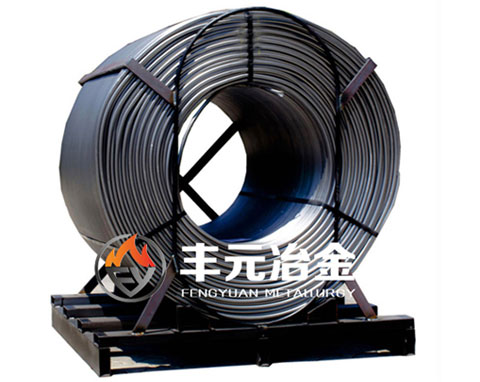
Inoculant Cored Wire for the steelmaking process is manufactured using various methods. Here we will explore the various steelmaking applications of this wire and its manufacturing process. We will also look into the manufacturing process and some of the most common mistakes. Read on to find out the best way to manufacture inoculant wire for steelmaking. Here is a quick overview of the process. Let's get started.
If you're looking for an Inoculant Cored Wire Manufacturer, you've come to the right place. There's no need to struggle to find the right product - just read on to learn about the benefits and disadvantages of this type of wire. Inoculant cored wire is a great choice for high-quality wire. This process is highly automated, reducing the chances of errors related to dosing. In addition, this process produces an unmatched consistency in the finished iron.
The outer sheath of the cored wire was 0.4 mm thick. The fill was a mixture of calcium and iron powders in weight proportions of 30:70. The calcium iron powder mixture contained 275 g/m. The calcium bar 8 filling had a diameter of 8.5 mm and weighed 85 grams per metre. The calcium content increased as the wire was used in welding.
The cored wire can have a D2/D1 ratio of between 1.3 and 6.2. This ratio allows for a minimum active substance and insulating material to remain in the core. A higher D2/D1 ratio than 1.3 may lead to major heat losses in the molten metal bath. An imbalance in the ratio will also increase the cost of cored wire. This article discusses the differences between the two.
The simplest form of inoculant cored wire is the CaFe cored wire. Its name is derived from the fact that it contains calcium, and the steel produced from this alloy contains the same amount of calcium as the CaFe cored wire. The yield of the calcium addition is approximately ten to fifteen percent. It is important to note that this method is only partially effective because the metal is still very hot at this point.

The manufacturing process for inoculant cored wire in steel making is a complex one that requires a highly controlled environment. It includes a series of processes that require the use of different types of materials. The first step is extrusion. Extrusion produces a cylinder-shaped material which is then solidified through a die. The second step is continuous casting, which results in a continuous bar.
In addition to the granular content of the alloy, the wire has a wide range of properties. Depending on the desired properties, different alloys can be used in the cored wire. One such alloy is made from calcium and iron powders, which are commonly referred to as CaFe. The wire is wrapped with a steel sheet to prevent oxidation. In addition, it can be desulfurized to remove non-reacted calcium carbide. The wire station can also be fully enclosed to catch the reaction effluents.
Inoculant cored wire is an essential part of steel manufacturing processes. Typically, this wire is delivered in wooden spools, a practice that requires significant storage space. Using cored wires reduces the treatment time of steel by about 80%, compared with 130 seconds for CaFe wire. Steel mill operators calculate the length of the wire to inject with the filling powder.
To manufacture a product containing inoculant, a steel manufacturer needs to use a variety of technologies. Among these are an injection machine and a wire guiding tube that leads to the ladle. The guiding tube should be close to the surface of the bath to ensure proper penetration through slag. Another essential tool is the guiding system from the coil to the feeder machine. Calcium monosilicate is the most common form of cored wire used in the steel industry.

Write a Message